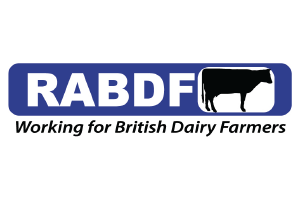The Government has announced it is to introduce amendments to the Levelling Up and Regeneration Bill at Third Reading, enhancing Protected Landscape Management Plans and placing a strong requirement on public bodies and local authorities to contribute to their delivery.
Defra is in "serious discussions" with the Home Office on extending the Seasonal Workers Scheme visa.
The Scottish government has published the Agriculture and Rural Communities Bill which is intended to reform how food and farming production is supported.
The Sustainable Agriculture Initiative Platform has launched its global framework for regenerative agriculture. The project involves over 30 agricultural cooperatives and corporates including Nestle, Danone, ABF Sugar and PepsiCo.
Croydon North MP Steve Reed has been appointed Shadow Defra Secretary.
Innovate UK is aiming to integrate its three centres into one integrated facility. Thus Crop Health and Protection, The Centre for Innovation Excellence in Livestock (CIEL) and the Agricultural Engineering, Precision and Innovation Centre (Agri-EPI) will become one.
The number of people working on farms in England on 1 June was 292,000, down 2.9% on 2022. Farms, business partners, directors and spouses fell by 0.6% to 179,000, regular workers fell by 4.2% to 65,000 and the number of casual workers fell by 11%.Of the principal farmers, 12% were female. Not surprisingly, 35% of principal farmers were aged 65 or more, only 16% were under age 45.
Sterling fell back against the US dollar and Euro this month but recovered marginally against both as the month ended. Crude oil prices strengthened materially this month as OPEC's plan to reduce output, despite the climbing demand, played out.
The average dairy cow price improved and remained strong for much of the month but fell back in the final weeks. Climbing from the opening position of £1386 per head to peak at £1438, it went on to fall back to a closing position of £1232 per head (down £154 to sit £222 below the average a year earlier).
UK milk prices continue to fall. The UK average all milk price for July was 35.67 pence per litre, down 0.81 p/l from the June average and 10.92 pence per litre below the price a year earlier but still 1.56 pence per litre above the rolling 5-year average of 34.11 pence per litre. The first estimates of August's average milk price, however, show an increase of 0.5 pence per litre. The EU average for July was 39.22 pence per litre.
July figures show the GB milking herd has fallen by 0.6% compared to a year earlier, to 1.62 million head. Youngstock fell by 1.2% to 929,000 head. Only the 2-4 year age group saw an increase in numbers by 21,800 head.
Latest figures from BCMS show the number of calf registrations in the first 6 months of 2023 fell by 2.1% to 1.53 million head, compared to the same period in 2022. The greatest fall was in dairy male calves down by 19%.The number of calves available for beef production fell by 1.8% to 1.3 million head. Reductions continued in Continental crosses but native breeds such as Aberdeen Angus and Hereford crosses continued to grow.
Defra has opened a consultation with a view to a new bovine electronic identification system where a beast's ear tags can be scanned to access its digital record, make changes and report births, movements and deaths. It will no longer be necessary for a separate on-farm holding register to be maintained or manually updated passports. The consultation closes on 15 Nov. RABDF will be responding.
In the year to June, the number of new herd bovine TB incidents in England fell by 16%,compared to the previous year, with falls of 18% in the High Risk area and 14% in the Edge area but an increase of 7% in the Low Risk area. The number of herds not officially TB free fell by 18% in England.
A study published in Environmental Research has provided significant evidence that Global Warming Potential (GWP) should be adopted instead of Life Cycle Assessments when considering the environmental impact of foods. Current methodology fails to recognise the distinct nuances within agricultural systems, particularly the characteristics of biogenic methane released by livestock which, unlike carbon dioxide, is short lived, dispersing in the atmosphere after 12 years. The UN Intergovernmental Panel on Climate Change has acknowledged that current accounting for methane is incorrect.
A number of multiples reduced their milk price during August with M&S down 1.4 pence per litre, Sainsburys down 0.21 p/l and Co-op down 0.07 p/l.
Lloyds Fraser, one of the UK's largest milk hauliers, has entered administration, affecting Muller, Arla, Meadow, Lactalis and Wyke Farms in the Midlands, Cheshire and North Wales.
A Rabobank report suggests that Chinese milk production has tripled over the past 20 years to 39.3 million tonnes aided by significant live imports of dairy cattle, 232,000 alone in 2022 from Australia and New Zealand. The number of dairy herds with more than 1000 cattle increased from 24% in 2015 to 44% in 2020. This is expected to grow to 56% by 2025.
"Why nitrogen matters in livestock production" a report published by the Centre for Innovation Excellence in Livestock (CIEL) has identified that the industry can make better use of nitrogen by improving on-farm practice.
Hope that's of interest. As ever happy to answer any questions/queries.
Tim Brigstocke
Policy Director.
